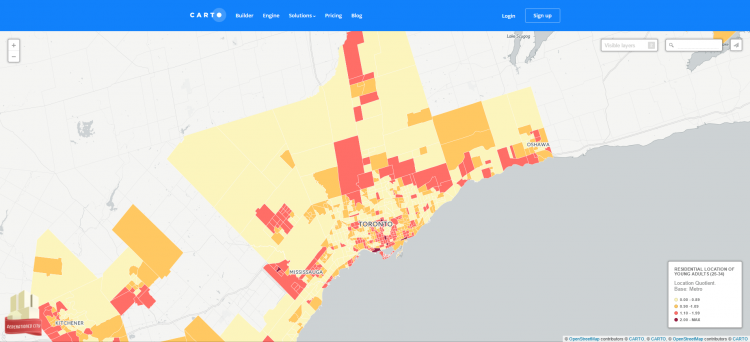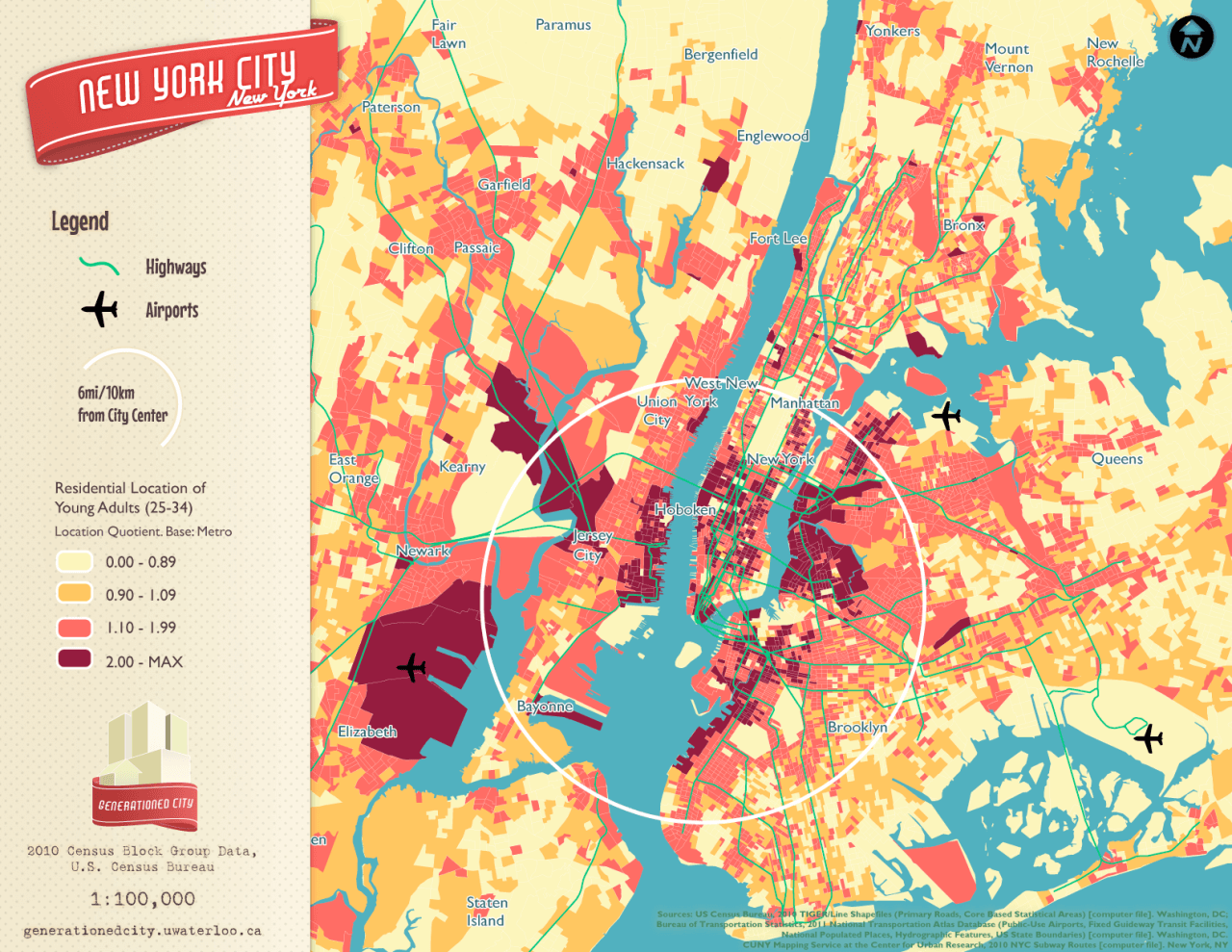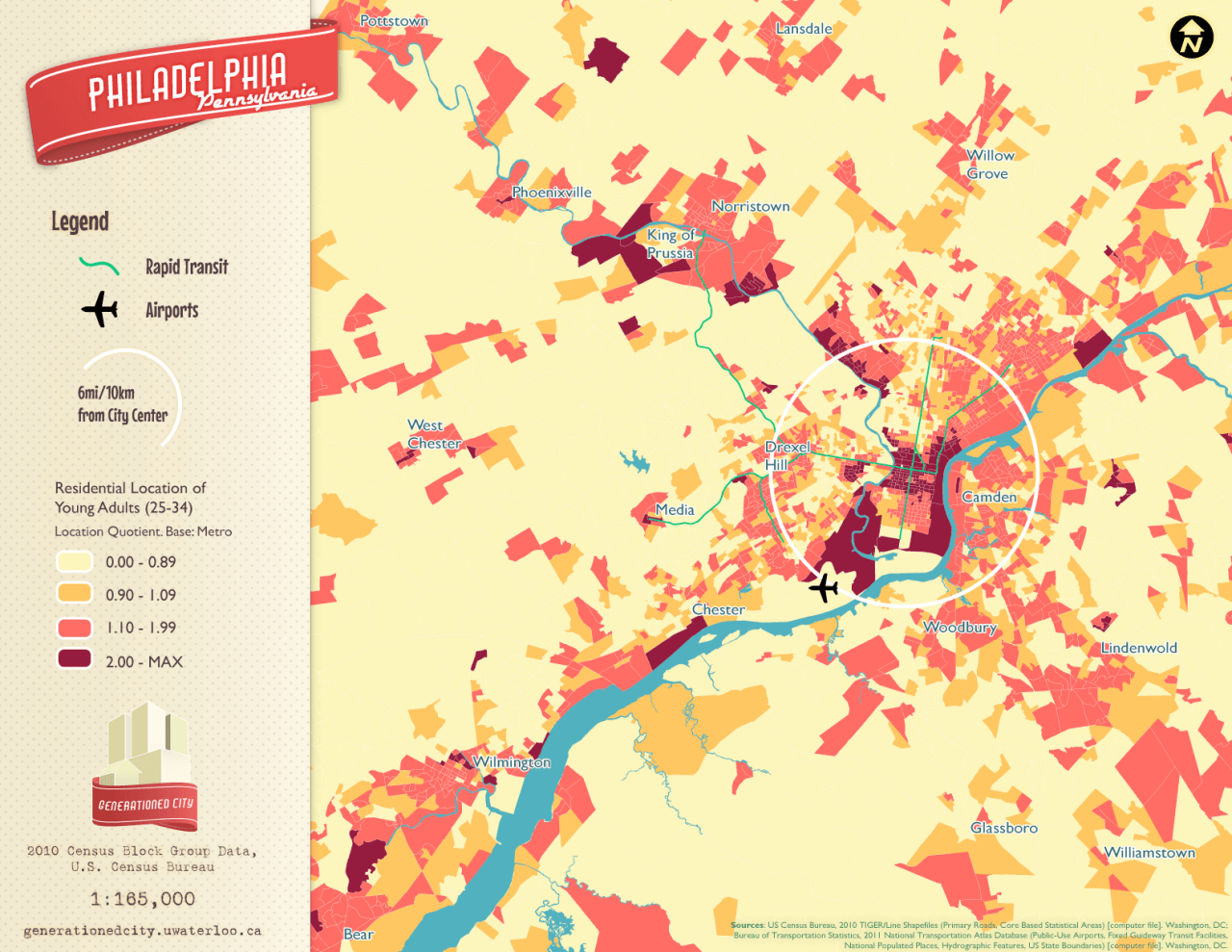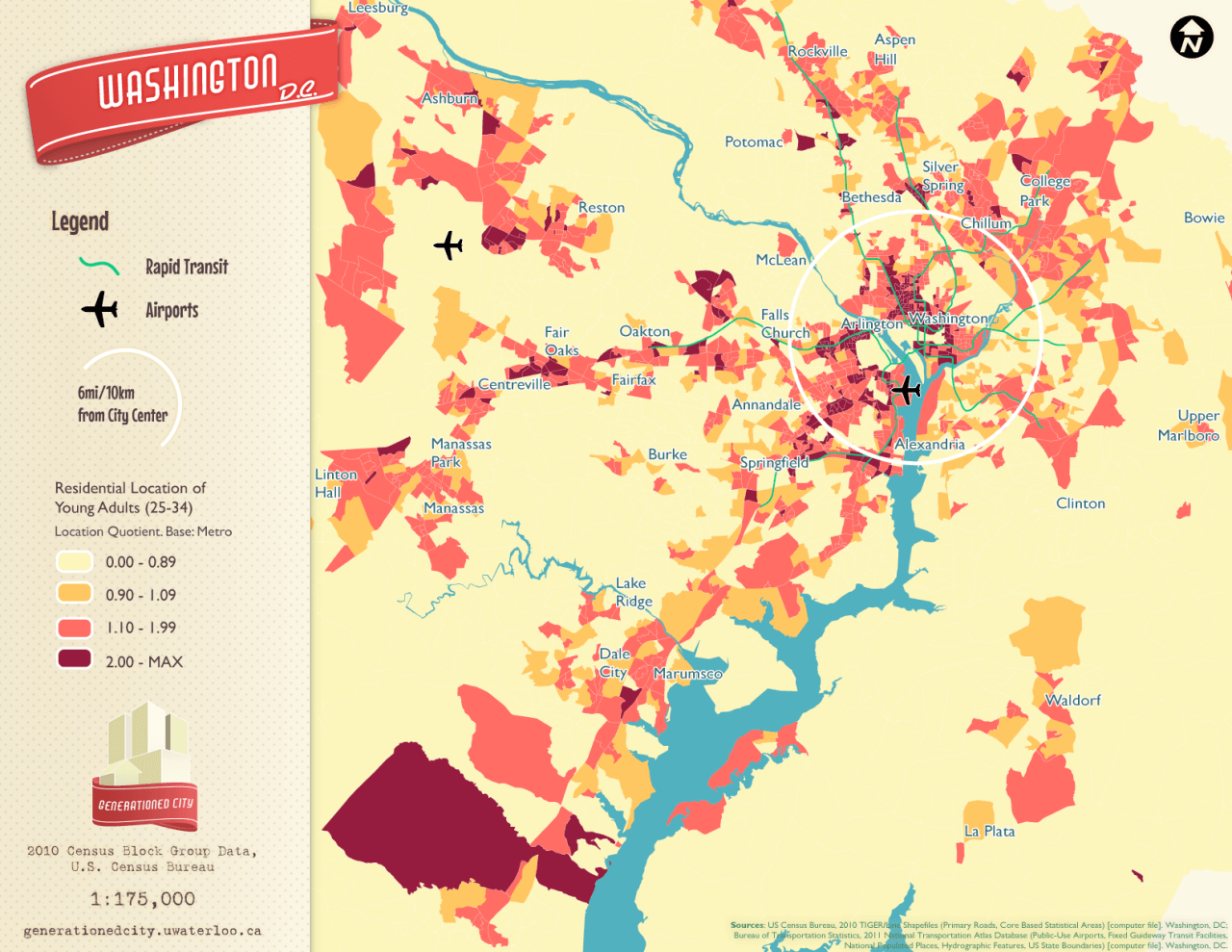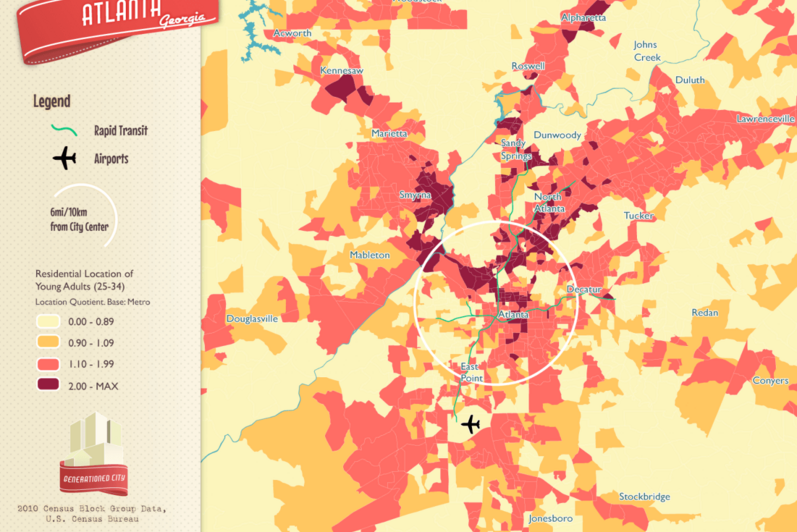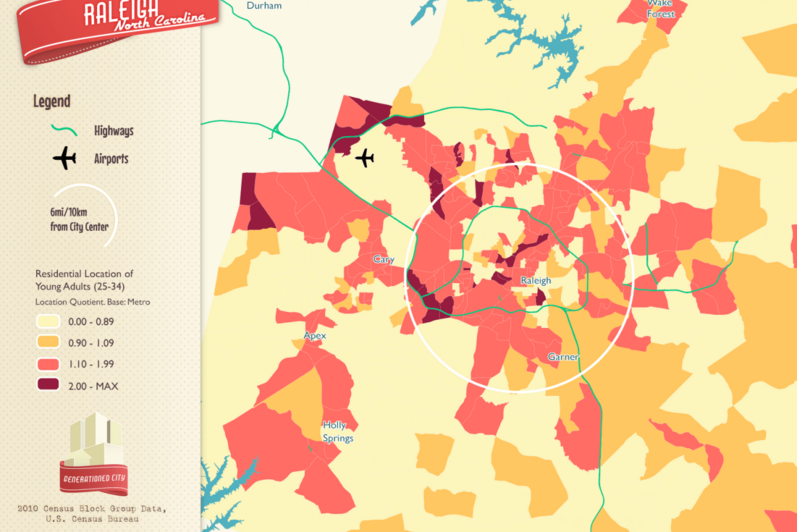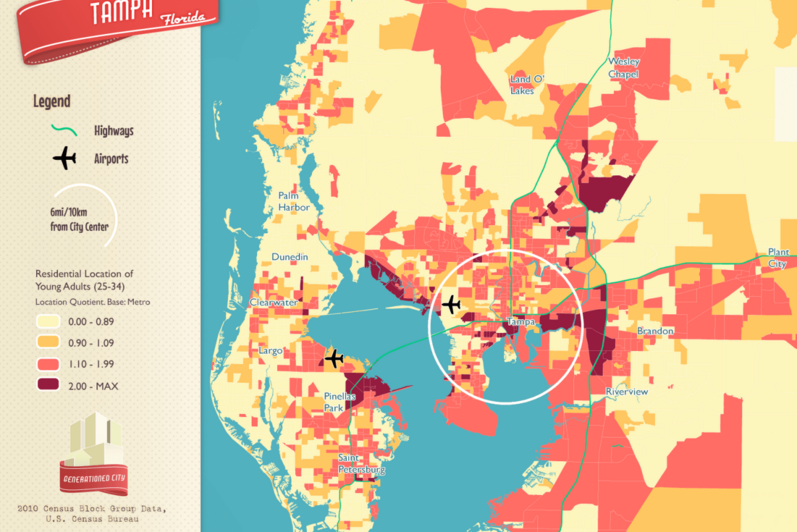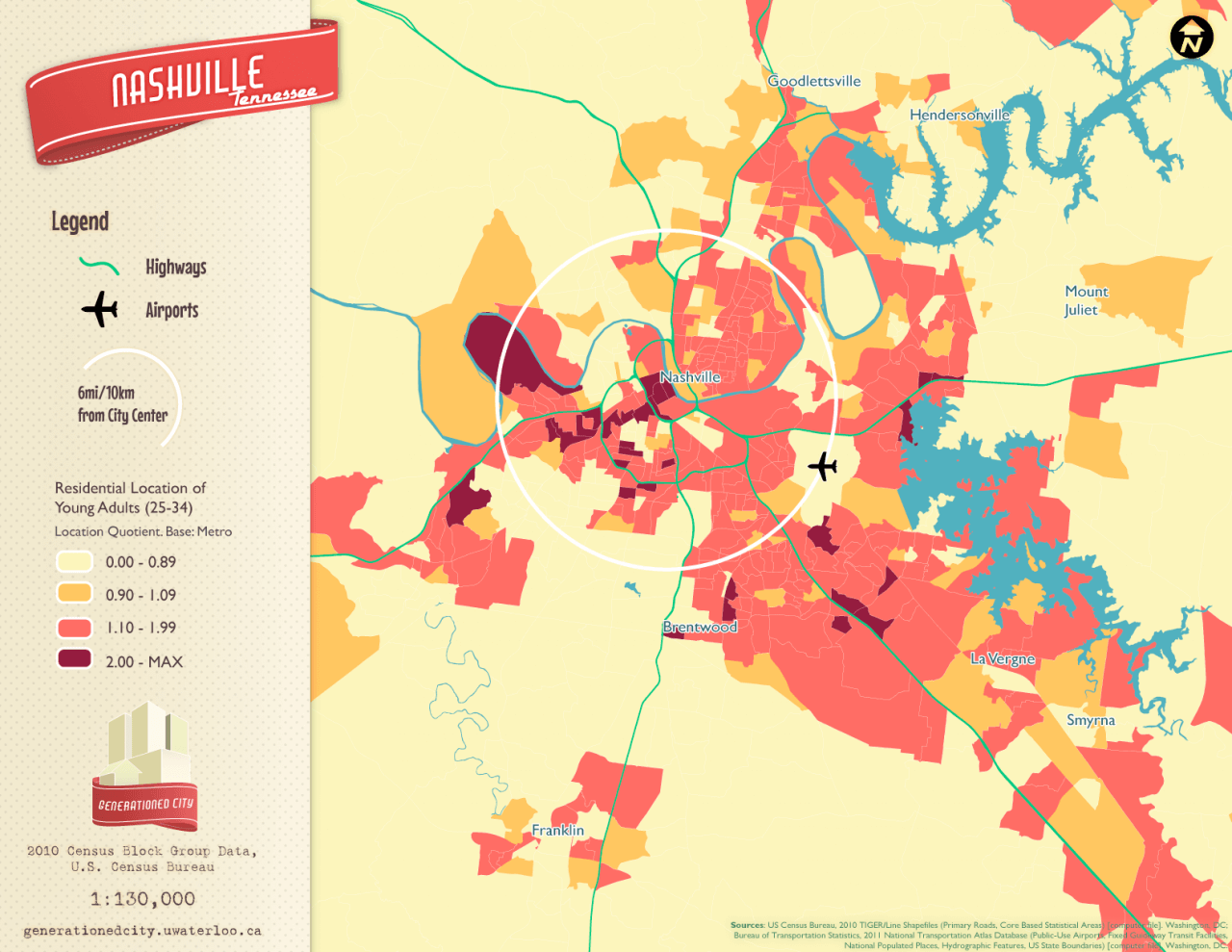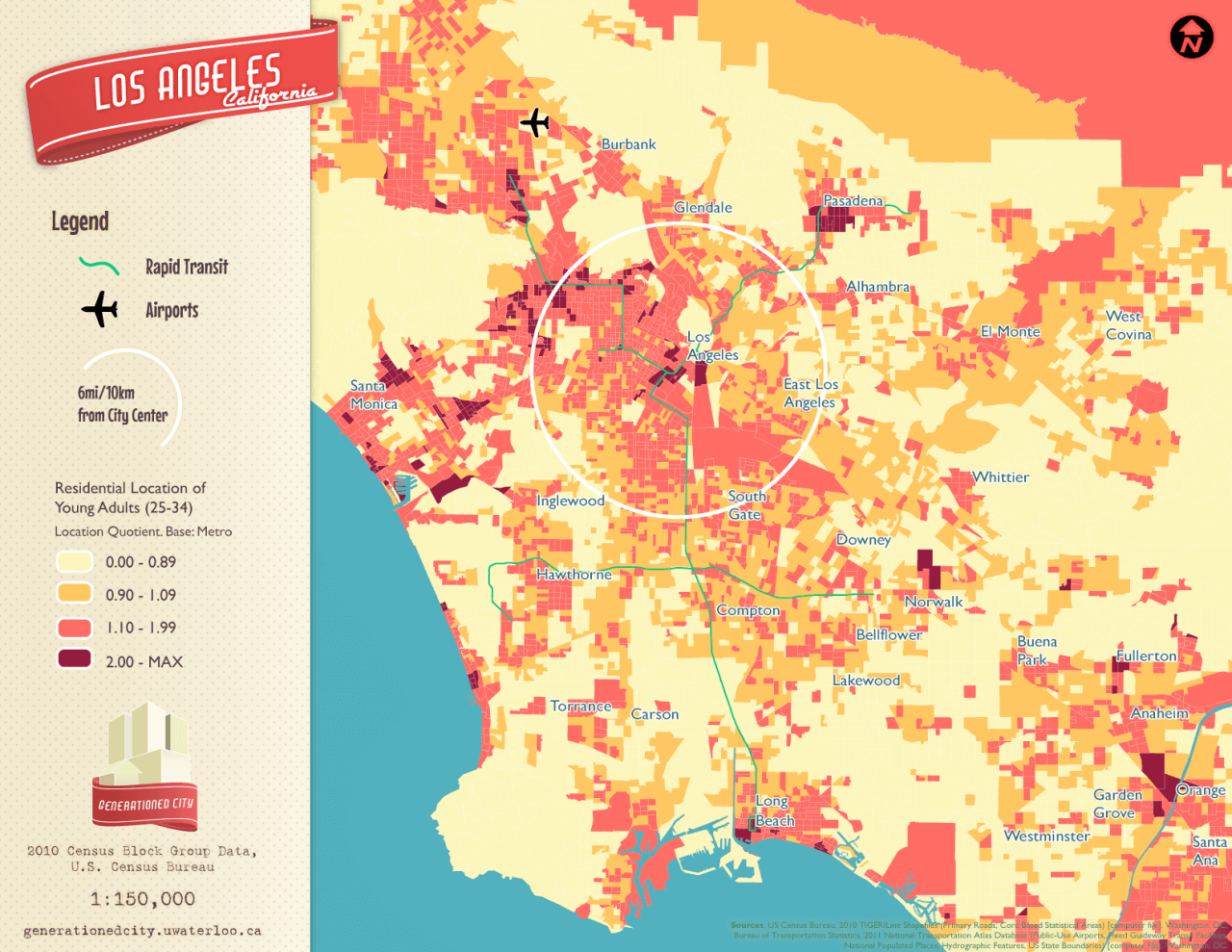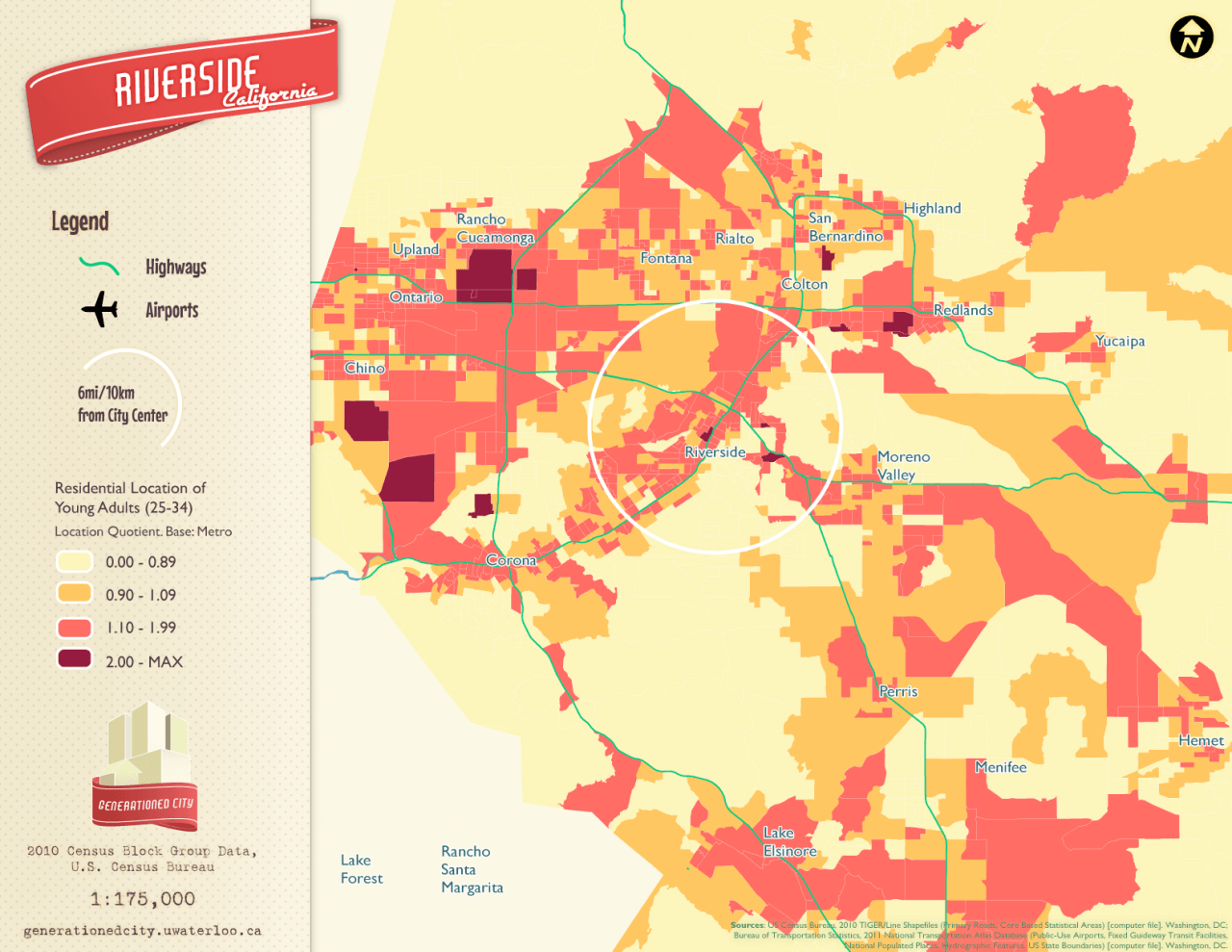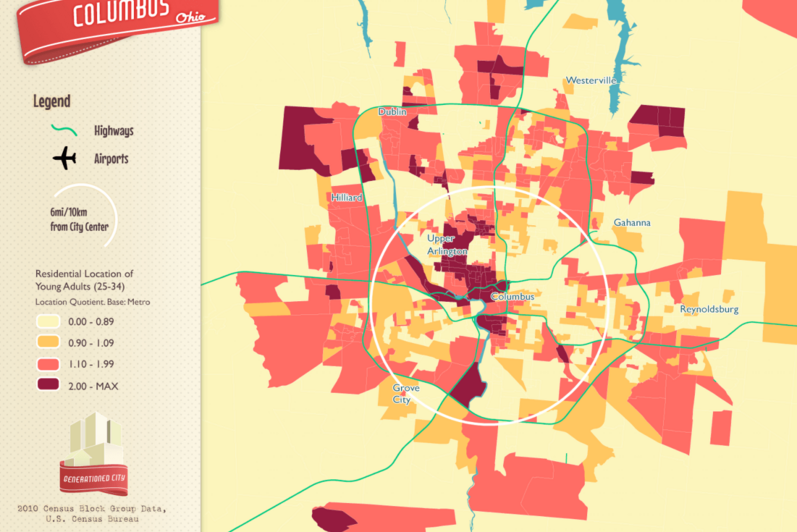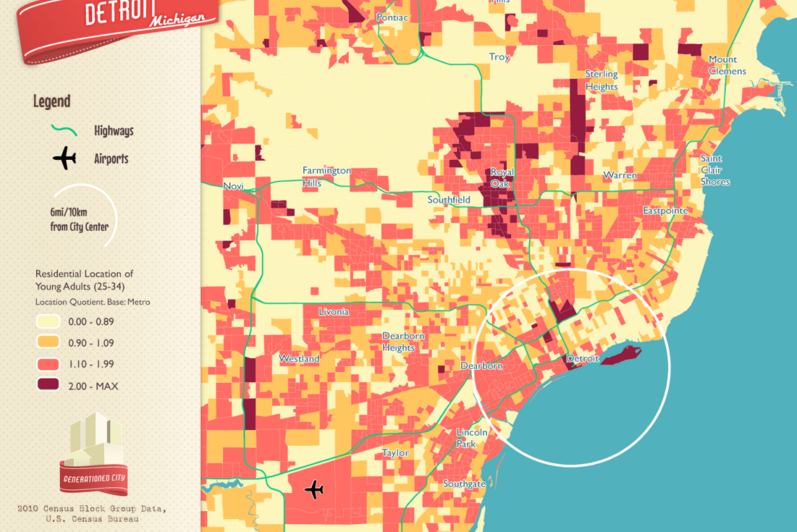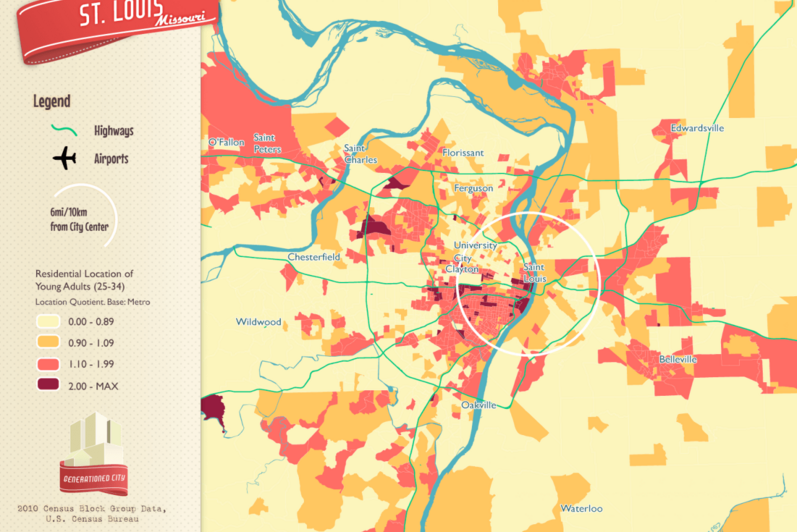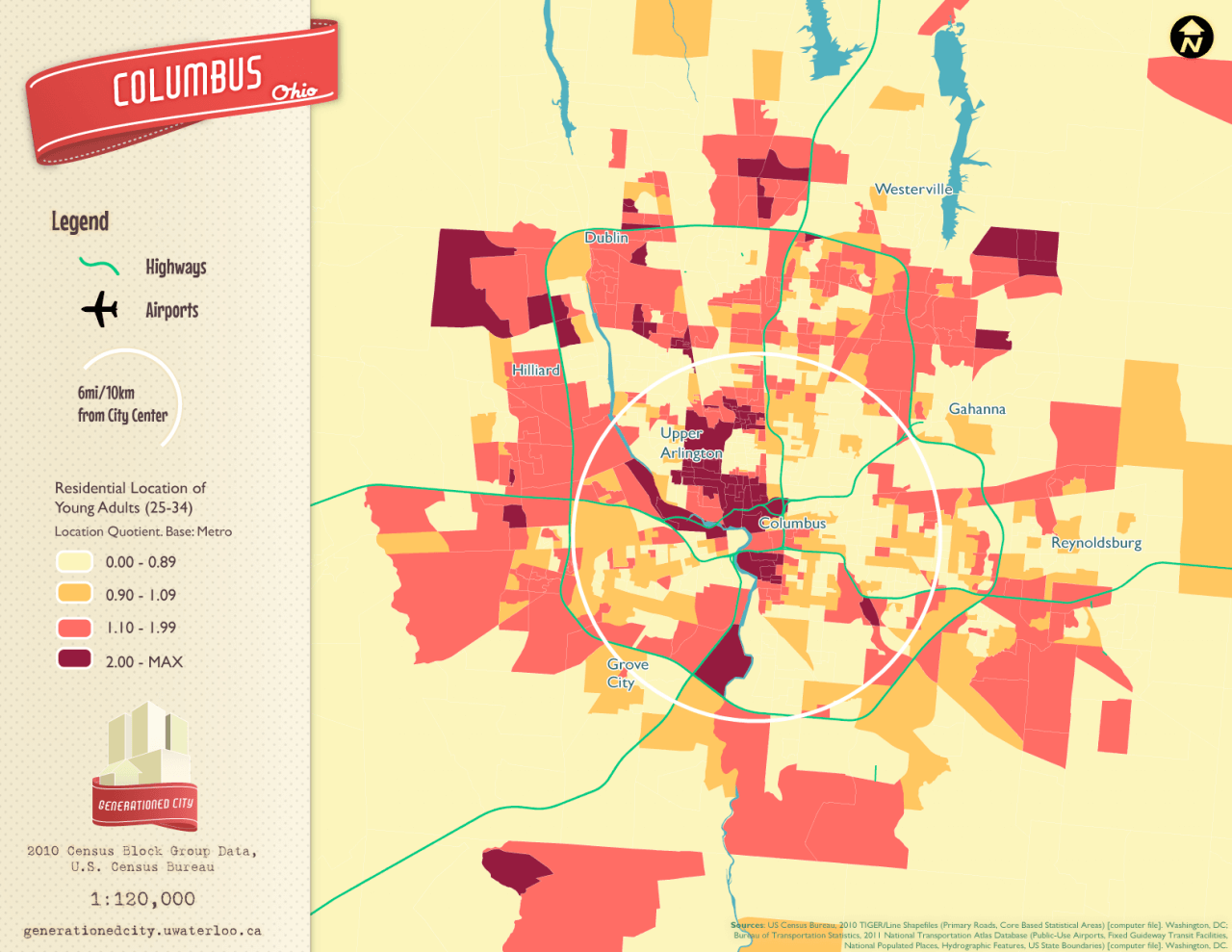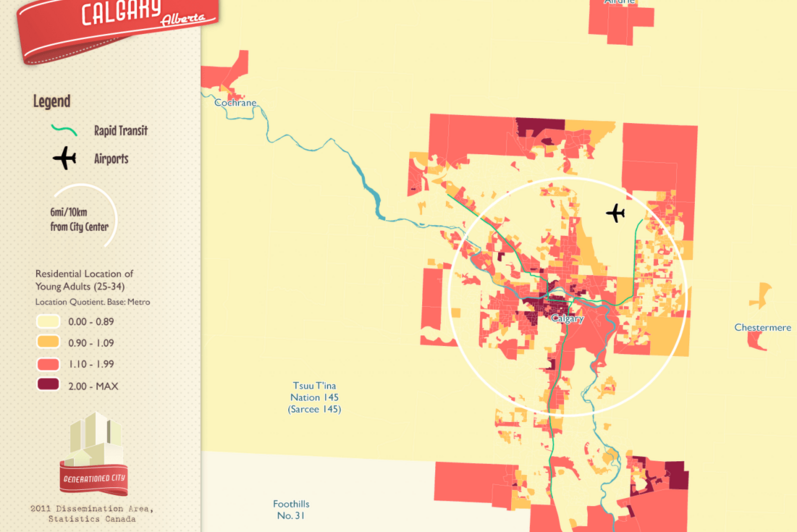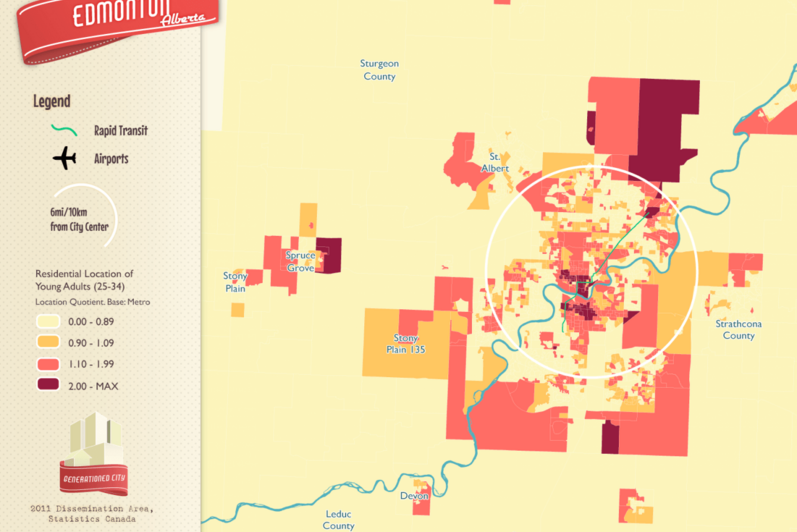It is now commonly accepted that Millennials, often defined as those born between 1980 and 2000, are highly concentrated in central areas of cities. Even Google autocompletes the phrase “Millennials live” with “Millennials live in cities”.

However, much of the research that identifies these trends, including some of our own, studies only a select few of the largest metropolitan areas. Therefore we decided to map all the major metropolitan areas in the U.S. and Canada, those with populations over one million, to see how the pattern of young adults’ residential location differ.

U.S. and Canadian metropolitan areas larger than 1 million in population size.
We are currently analyzing commonalities and differences across these 57 metropolitan areas and comparing the patterns to those of other generations, such as the Baby Boomers, using various statistical techniques. Preliminary results suggest that the metropolitan areas with the highest shares of young adults are also those where young adults are most centralized, and where the Baby Boomers are more suburbanized.
Professor Markus Moos coined this process “youthification”— an increase in the share of young adults such that the city or neighborhood remains young over time —to explain the phenomenon of young adults moving centrally as a result of rising affordability concerns, growing demand for urban lifestyles, a desire to get around without a car, declining household size and growing educational attainment, among other factors.

We are also trying to better understand more about the reasons behind young adults’ residential location decisions, and how these decisions may differ among young adults by city, income, gender, age, ethnicity, race and other factors. Are they drawn by urban amenities and cosmopolitan lifestyles? Is the presence of public transit and walkability important to them? Is housing affordability and a deficit of permanent, well-paid jobs impacting where young adults can live? Or is it a combination of these factors and others that drive young adults into smaller apartments that tend to be more common in high density areas such as downtown?
Check out the maps below to see the geography of young adults in your community (showing location quotients, using the metropolitan area as the base). Can’t find your city or town? Follow us on Twitter and send us a tweet using #addmycity. We will be able to add two to three places every few months — so you may have to be patient depending on how many requests we get.
See the Residential Location of Young Adults in Canada:
